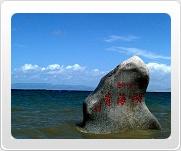By the end of October, Qinghai had approved the setting-up of 614 foreign-funded enterprises, with a total investment reaching 10.283 billion U.S. dollars. As the local economy is weak in its foundation and there is no geographical location advantage, foreign investment remains a big short board for Qinghai in its economic development.
According to Ma Shaoping, head of the foreign investment section of Department of Commerce of Qinghai Province, among the approved foreign-funded enterprises, only 120 are operating, with 70 of them are profit-making ones. From 1985 when the first foreign-funded enterprise was established, there have been enterprises from 35 countries and regions, including the United States, Britain, Germany and Australia, investing in Qinghai, with investment from Hong Kong accounting 60 percent.
Foreign investment covers a wide range of areas, such as new energy, new materials, building industry, financing and leasing, catering and cosmetics. Affected by the low level of opening up, weak economic strength, lagging infrastructure and other factors, the foreign investment attracted by the province was small in scale and poor in quality and foreign business are mostly medium and small-sized investors and the number of long-term and strategic investment is limited. The number of high tech projects is limited and most of the projects lack enough technology. There are no name-brand enterprises and products.
Situated on the Qinghai-Tibet Plateau, the natural conditions are harsh. It is neither close to borders nor the inland ports, without any geographical location advantage. At the same time, the province lack policy support for foreign investors, especially the support and preferential policies compatible with the actual conditions of the province. Up to the present, according to Ma, Qinghai does not have an independent investment promotion organization. Whereas other provinces all have investment promotion or economic cooperation agencies, with a large number of professionals responsible for attracting foreign capital.
Although abundant in labor resources, the quality of labor is relatively low and the personnel competent for developing international service trade and service outsourcing is lacking. The province is also lagging behind in higher education. The current conditions and levels of higher education have made it impossible to have effective intellectual support for developing international service trade and service outsourcing. All the economic parks and zones lack highly competent and multi-disciplinary personnel. That is why it is very difficult for large international service outsourcing enterprises and international service trade enterprises and high and new technology enterprises to stay in the province.
For years, Qinghai's economic development has been out of proportion with the efforts to attracting foreign capital, without a complete and reasonable industrial system. The industrial structure is monolithic, with the advantage in attracting foreign capital lies only in mineral resources development and energy-gobbling industries. But the state restricts the development of such industries, thus, to a certain extent, restricting the advantage of Qinghai to attract foreign capital by the strength of rich natural resources. Besides, economic and technical development zones are the important carriers of foreign-funded enterprises. But in real development, the level and ability of attracting foreign capital has been declining. This is because after the state issued the corporate income tax law in 2007, both domestic and overseas enterprises enjoy the national treatment in taxation and the last tax concession for foreign-funded enterprises was revoked, making a large number of foreign-funded enterprises become domestic ones. Then, due to the restriction by the indicative catalog for guidance of foreign investment industries, many foreign-funded enterprises no longer have the support or have limited support from the state and provincial finance, forcing some foreign-funded enterprises in the development parks and zones to turn to domestic ones.
The West China development drive and the Belt and Road Initiative have provided opportunities for Qinghai to open up. With Gansu province to the east, Sichuan and Tibet to the south and Xinjiang to the west, Qinghai is located in the main line of the China-Central Asia-West Asia economic corridor on the Silk Road economic belt and in the confluence of the new Eura-Asian continental bridge, the Indo-China Peninsula and Sino-Pakistan, Bangladesh-China and India-Mynmar economic corridor. It is also a point that links the land Silk Road and Marine Silk Road. With the establishment of the Caojiabao bonded logistics center, the opening of the China-Europe liners and the improvement in the air and land communications, Qinghai's poor geographical location disadvantage has been made up, to a certain extent.
According to the Qinghai Statistical Bureau, since the implementation of the West China Development drive, Qinghai's GDP has kept at a double-digit growth, higher than the national average. Mao Shaoping said: "The high-speed development has, to a large degree, benefited from the partnership support to the lagging areas of the province." At present, there are six provinces, such as Beijing, Shanghai and Zhejiang having formed partnership with Qinghai to support the lagging areas. By establishing aid organizations, exchanges of personnel and investment promotion, they have given a tremendous support and help to Qinghai in the economy, medical and health and education areas.




 A single purchase
A single purchase









